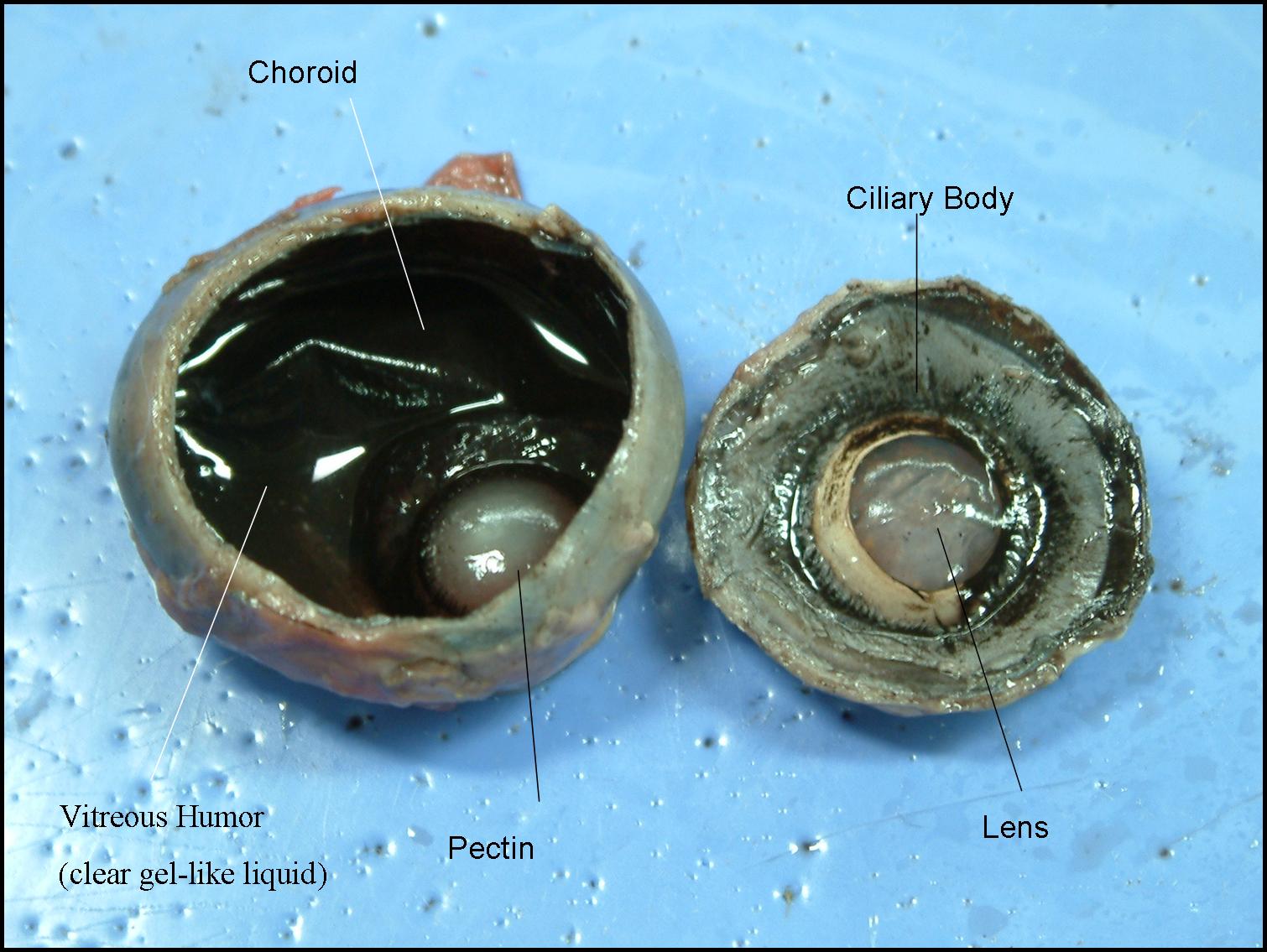
 |
The tunics have the same function in birds as mammals. However, there are some differences in structure. The sclera, the outermost layer, is reinforced by eleven to sixteen small bones forming the sclerotic ring in avians. The cornea is generally larger in mammals than in birds, in relation to the size of the eye, with nocturnal birds having larger corneas than diurnal birds.
The uvea is the middle tunic, which contains the choroid, tapetum lucidum, iris, and ciliary body (Internal Structures of the Avian Eye).
One major difference between the mammalian and avian retina
is that the mammalian retina is vascularized, while the avian is not. The
retina contains the fovea, which is the point of sharpest vision or highest
resolution. In certain avian eyes, such as the hawk, there are two fovea.
There is a central area across the retina with a fovea at each end. This
allows the bird to see the horizon, while in flying position, without the
movement of eye or neck muscles. The common buzzard has 1,000,000 cones
per square millimeter of retinal surface as opposed to man, who contains
200,000.